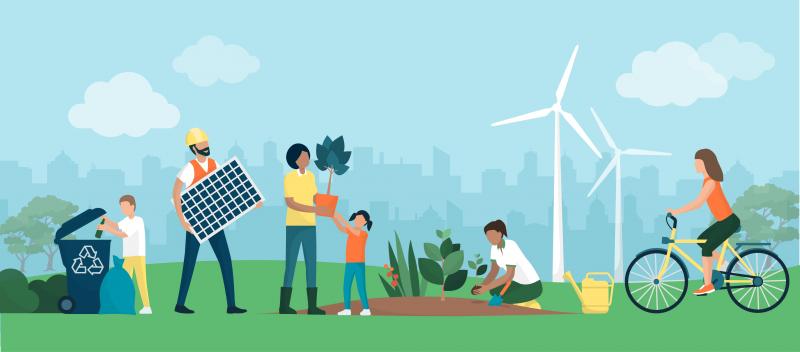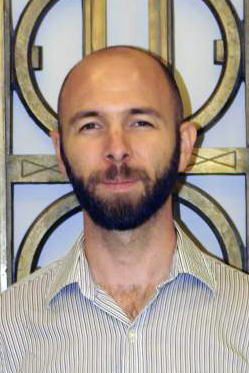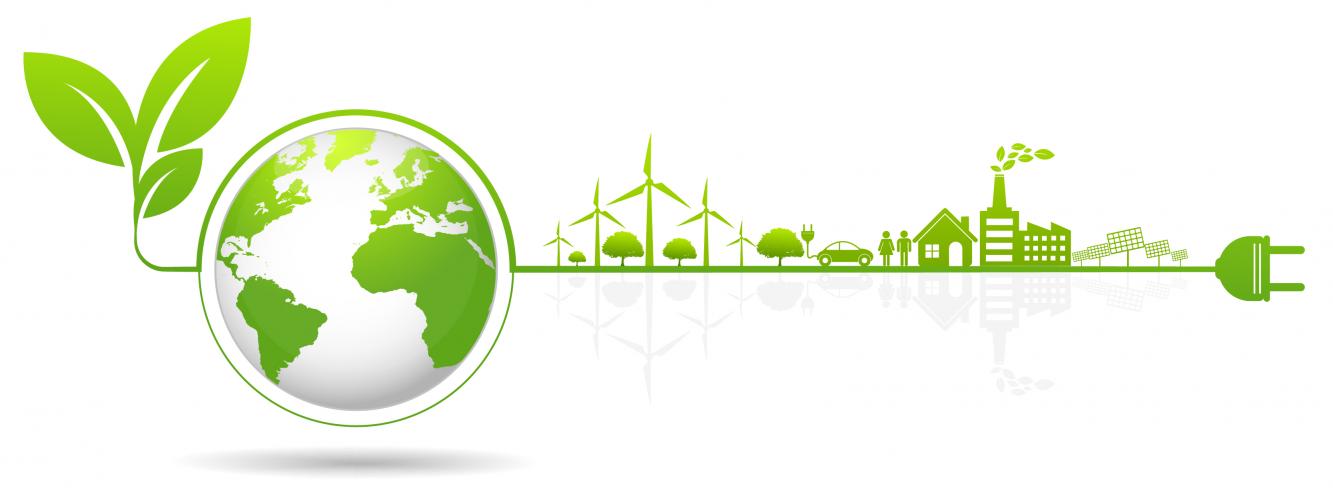Ivan Allen College Faculty Bolster Environment, Sustainability on Many Fronts
Editor’s note: This is the second in a series of stories exploring sustainable development work in the Ivan Allen College of Liberal Arts.
Every day, low-income households with high energy bills must choose between paying for necessities like food and medicine or keeping the lights on. Such dilemmas illustrate the environmental, economic, and social justice issues at play while working to build a more just and sustainable future.
This dilemma — which is the subject of a recently published paper by Marilyn Brown, Regents Professor and Brook Byers Professor of Sustainable Systems in the School of Public Policy — is just one of many being examined by the six schools of the Ivan Allen College as part of President Ángel Cabrera’s 10-year strategic vision for Georgia Tech, unveiled in November 2020.
President Cabrera’s plan is aimed at developing leaders who advance technology and improve the human condition. This idea is coupled with his call for Georgia Tech to support the United Nations’ Sustainable Development Goals, including wide-ranging efforts to promote renewable energy sources and combat climate change in socially just and equitable ways.
In addition to research and collaborations with other units across Georgia Tech, the Ivan Allen College offers sustainability-related degree programs, such as a minor and a graduate certificate in Global Development through the School of Economics, the Sam Nunn School of International Affairs, and the School of City and Regional Planning.
The innovative Sustainable Energy and Environmental Management curriculum offered through the School of Public Policy leads to either a certificate or the Master of Sustainable Energy and Environmental Management degree, the only graduate degree in Georgia fully dedicated to sustainability issues.
“The Ivan Allen College provides a unique liberal arts education by bringing students together from all around the world to discuss the intersection between technology, human dignity, and sustainability.”
– Kaylin Berinhout, fourth-year Economics and International Affairs student
Numerous researchers in the School of Public Policy work on environmental issues, such as Omar Asensio, an assistant professor whose work has spanned the energy consumption of smart devices, electric vehicle charging policy, civic data science for equitable development, and more; Alice Favero, whose recent research has investigated the climate change and land-use impacts of biomass energy; and Daniel Matisoff, who recently wrote about the impact of demonstration and pilot projects on the adoption of green energy technologies. In the School of Economics, a couple of examples would include Chair Laura Taylor’s work to redefine a key calculation used in many environmental regulations, Associate Professor Matthew Oliver's exploration of carbon taxes and environmental agreements, and former Ph.D. student Anthony Harding’s work on solar geoengineering and income inequality.
In addition to these schools, other schools in the Ivan Allen College make strong contributions in these areas. For instance, faculty from the School of History and Sociology and the School of Literature, Media, and Communication are collaborating on a study to examine the resilience of historically marginalized communities when it comes to environmental disasters and other issues. Sustainability issues are also at the heart of Associate Professor Britta Kallin’s Language for Business and Technology study-board course Current Events: Sustainability in Germany.
To Kaylin Berinhout, a fourth-year Economics and International Affairs student from Alpharetta, the combination of expertise and outlook offered by the Ivan Allen College make it an ideal place to make a difference.
“The Ivan Allen College provides a unique liberal arts education by bringing students together from all around the world to discuss the intersection between technology, human dignity, and sustainability,” Berinhout said.
Here are just a few more examples of how Ivan Allen College faculty and students are working to secure a more just and sustainable world, using the United Nations’ Sustainable Development Goals as a guideline.

Understanding the Energy Burden
A team of researchers headed by Brown sought to understand the impact of energy equity issues in a literature review, “High Energy Burden and Low-Income Energy Affordability,” published recently in the multidisciplinary journal Progress in Energy.
Low-income households spend a higher percentage of their money on electricity and gas bills than any other income group, Brown said.
One consequence of this energy burden is that financially strapped households cannot afford an investment in environment-friendly, sustainable energy technology that is crucial to the nation's transition to new energy sources, the survey noted.
"Energy drives the U.S. economy and impacts nearly every dimension of modern society," Brown noted. "It is an imperative to daily existence. When access to energy becomes difficult, the burden is felt in every facet of life — housing, mobility, health, work, education, and much more."
The survey found that despite decades of government assistance programs, the energy burden for low-income households has not declined. Energy utility bills average 3.1% of household income for all income groups and average 8.1% for households below 200% of the poverty level. Energy burdens are particularly high in the South, in rural areas, and in native American, black, and Hispanic households. The largest and best-funded low-income energy programs aim to help families pay monthly utility bills; thus, they focus on a short-term fix rather than a long-term effort to address the complex issues underlying poverty and energy-inefficient housing.
The survey also revealed possible approaches to mitigating the energy burden while promoting sustainable energy.
For example, energy affordability for low-income households could be improved significantly by expanding the technology scope of low-income energy-efficiency programs to include solar panels, smart meters, home energy storage, and electric vehicles. New incentives could prompt landlords to install rooftop solar panels, smart thermostats, and other clean-energy and energy-conserving devices.
In addition, the study found that the funding and execution of any program are most effective when finely meshed and interwoven with delivery systems that engage stakeholders. Program administrators need to work on solutions with the people who are closest to the energy burden problem because those same people are also closest to the solutions.
"A coordinated approach to home energy, health, safety, and housing could reduce low-income energy burden while delivering numerous other benefits," Brown said.

Confronting Climate Change
Despite the massive role of megaregions in energy consumption and the production of greenhouse gasses, there is surprisingly little research literature about their performance in achieving environmental and energy sustainability goals.
Professor Brian Woodall and Associate Professor Mariel Borowitz in the Sam Nunn School of International Affairs, propose to address this knowledge gap by studying the implications of sustainability-related policies and actions in three megaregions: the Boston-Washington corridor, Greater Tokyo, and the Amsterdam-Brussels-Antwerp triangle. Each is an expansive metropolitan area with large population, extensive economic linkages, similar topography and land-use patterns, and some degree of integrated infrastructure and environmental systems.
"These Global North megaregions are located on separate continents and embedded in different institutional arrangements, contexts, and cultures," Woodall said, "and they are magnets for human capital, hothouses of innovation, and dynamos for economic production, yet they pose challenges for sustainable development."
Previous research on megaregions relied on qualitative methods such as case studies. Instead, Ivan Allen College researchers, aided by a cadre of undergraduate student assistants, propose to use the geospatial data analysis of the NASA Nighttime Lights dataset to study how light intensity in each of the areas changes over time.
"The answers to climate change have existed for a long time," he said. "We just need to live different lives, but there's so much cultural and social inertia preventing us from doing that."
– Kent Linthicum, Marion L. Brittain Postdoctoral Fellow
This data can be used to map the changing boundaries of the three megaregions over time, filling a gap in the research literature, as the precise boundaries of megaregions are unknown and constantly shifting. Once a clear picture of the boundaries is established, the researchers will overlay other types of geospatial information to compare data on regional planning, transit, food security, and environmental conditions.
"The geospatial analysis enabled by this grant from the Digital Integrative Liberal Arts Center will bring an important new dimension to megaregion research," Borowitz noted, "and provide a useful tool for sustainable development planning."
Perrine Kemerait, a fourth-year International Affairs student set to graduate in May, is one of the student researchers working on the megaregions team.
"Megaregions appear to be a novel spatial form that is here to stay, and our team’s goal is to determine how this growth can be achieved sustainably by focusing on the importance of transportation infrastructure, food security, and disaster resilience among other factors," Kemerait said. "Being in Atlanta, we are exposed every day to both the beauties and the shortcomings of living in a megaregion. Having these salient experiences is an impetus for me to utilize the unique skills and talents I have honed at Georgia Tech with the ultimate intention of improving the lives of others."
Promoting a Different Way of Thinking

Unless we decarbonize our industrialized world over the next 10 to 30 years, climate change will ravage the environment we know — and uproot our present way of life along with it. But a transition to a sustainable-energy economy will require more than technology.
So said Kent Linthicum, a Marion L. Brittain Postdoctoral Fellow in the School of Literature, Media, and Communication. In his upcoming book, Crowning Coal: Slavery, Fossil Fuels, and Literature 1755–1865, he is helping show that energy and cultural systems are intertwined.
"To decarbonize means more than switching from fossil fuels to renewable energy; it means switching from a culture of fossil fuels to one of renewable energy," he said.
Linthicum looks to the past to understand today’s addiction to fossil fuels — a specialization that further illustrates how acting on climate today goes beyond technical solutions and how Ivan Allen College researchers who focus on literature, culture, and history are poised to make important contributions.
The traditional notion is that fossil fuels replaced slave labor.
“But I argue that these two energy sources reinforced each other through print media and culture,” Linthicum said. “This bolstering of both fossil and slave regimes was accomplished by drawing parallels between coal and steam and enslaved Black people. In cultural terms, fossil fuels were, in part, adopted as a way to further extend white supremacy."
Disconnecting people from familiar cultural pathways is complicated and difficult. For example, individuals whose lifestyles and livelihoods depended on the work of enslaved people could no more imagine anything outside of that system than many Americans of today can imagine life without automobiles.
More than a mere means of transportation, cars serve as extensions of ourselves and as status symbols, Linthicum said. Getting a driver's license and buying one's first car are both significant rites of passage.
Linthicum hopes that by recognizing the cultural history of our dependence on fossil fuels, we will begin to question the assumptions we make about our energy system and whether we really need to live incredibly carbon-intensive lives.
"The answers to climate change have existed for a long time," he said. "We just need to live different lives, but there's so much cultural and social inertia preventing us from doing that."
Anticipating Unintended Consequences
Conventional wisdom holds that recycling industrial waste into useful products is always an environmentally sound practice. But Archana Ghodeswar has her doubts, at least as far as coal-burning power plants are concerned.
A fifth-year Ph.D. student in the School of Economics, Ghodeswar worked as an engineer in the electricity-generating power sector in her native India before coming to Georgia Tech. She knew that fly ash is a major hazardous byproduct of burning coal, and the government's industrial ecology policies required the waste be recycled, typically into building materials.
"I wanted to determine if an environmental policy that promotes the use of one type of waste was really reducing waste or just trading one form of pollution for another," explained Ghodeswar.
She conducted the study along with Matthew Oliver, associate professor and director of Undergraduate Programs in the School of Economics.
Ghodeswar developed a microeconomic model for cost-minimization in the context of a coal power plant. The model resulted in several hypotheses that recycling fly ash did not produce the expected environmental and health benefits. The hypotheses were tested using a unique panel dataset she compiled from annual reports of the Central Electricity Authority in India over seven years.
Her analysis revealed that, holding plant output constant, plants use more coal when fly ash utilization is mandated. Moreover, the additional coal is of inferior quality. This translates to an average annual increase of more than 2,000 metric tons of coal used per plant and more than 900 metric tons of additional carbon dioxide emissions.
Ghodeswar's findings led to a paper, “Unintended Consequences of Industrial Ecology Policy in the Indian Electric Power Sector,” in which she concluded that the reduction in disposal costs for one type of waste may simply incentivize the primary industry to alter its processes in a manner that generates other types of waste, thereby offsetting any anticipated environmental or health benefits.
"For industrial ecology to deliver its intended benefits in industries that produce multiple types of waste, policymakers must follow a more holistic approach to industrial ecology rulemaking so as to account for potential adverse economic incentives," she said.
‘Compassion and Desire to Understand the World’
Each of these examples has one thing in common: They focus on the needs of people, how technological or policy decisions affect them, or offer new paths forward, recognizing the complex web of economic, equity, and environmental issues that impact our lives.
That focus on people in solving any complex problem is at the heart of what the Ivan Allen College is all about and key to understanding our approach to helping build a more just and sustainable future, as Berinhout’s example shows.
“Through classes such as Gender and Global Development; Science, Technology and International Affairs; and Science Engineering and Religion, I have been able to learn about the problems facing the world while growing compassion for the students around me,” said Berinhout, who will graduate in May. “This compassion and desire to understand the world through the lens of those who are suffering is what the social sciences and humanities bring to the table when tackling the interconnected issues encompassed by the Sustainable Development Goals.”

For more of our series on sustainable development goal work in the Ivan Allen College, click "Read More"
You can also join the conversation about our work on Twitter using hashtag #SDGatIAC

